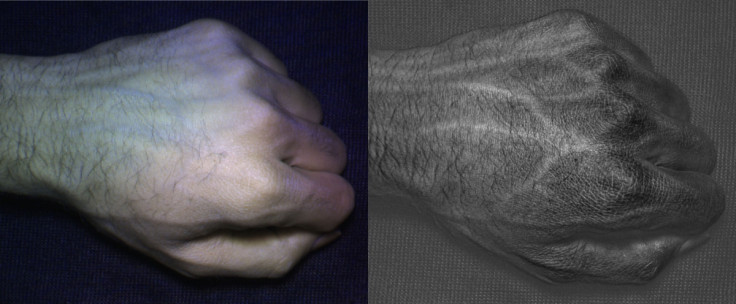HyperCam: $50 smartphone X-ray camera attachment can really get under your skin

Scientists from the University of Washington have invented a camera technology that makes it possible to reveal hidden details that are invisible to the naked eye, which would allow people to take X-ray photos of small items without shelling out thousands of pounds.
The HyperCam makes use of a technology called hyperspectral imaging, which involves scanning 17 wavelengths of visible and invisible near-infrared light from across the electromagnetic spectrum to capture unseen details.
Hyperspectral imaging is used in a wide range of fields, from helping geologists identify new oil fields or mines and scanning ancient manuscripts and artefacts, to diagnosing potential medical problems, detecting problems in food processing and military surveillance.
Existing hyperspectral cameras are very expensive and not designed for consumers to use but the researchers want to change this, by giving people the ability to X-ray much smaller items with a camera that costs either $800 (£518) on its own, or as little as $50 as a camera attachment added to a smartphone.
Detecting how ripe fruit is
A pocket-sized hyperspectral camera could be used to judge whether food is safe to eat, for biometrics to identify a person, or even to recognise gestures for interactivity with a video game.
The HyperCam comes with intelligent software that is programmed to spot hidden differences between photos taken by a normal camera that divides light into red, green and blue, and photos taken using hyperspectral imaging.
The researchers used the camera to take photos of 10 different fruits over a week and the software was able to predict the relative ripeness of the fruits with 94% accuracy, as opposed to photos taken with a regular camera, which it could only predict with 62% accuracy.

"It's not there yet, but the way this hardware was built you can probably imagine putting it in a mobile phone," said Shwetak Patel, Washington Research Foundation Endowed Professor of Computer Science & Engineering and Electrical Engineering at University of Washington.
"With this kind of camera, you could go to the grocery store and know what produce to pick by looking underneath the skin and seeing if there's anything wrong inside. It's like having a food safety app in your pocket."
Identifying a person by the veins on their hand
The researchers also took photos of the hands of 25 different people, photographing the back rather than the palm side, and HyperCam revealed so many details about the veins in each hand that it was able to differentiate between the 25 people with 99% accuracy.
At the moment, the technology does not work very well in bright light, something the researchers are working on as well as creating a prototype of the Hypercam small enough to clip on to a smartphone.
Their research, HyperCam: Hyperspectral Imaging For Ubiquitous Computing Applications, is published in the Proceedings of the 2015 ACM International Joint Conference on Pervasive and Ubiquitous Computing.
In China, scientists are using hyperspectral imaging to develop a camera system that can detect possible terrorists in a crowd by measuring the amount of oxygen in blood across visible areas of the body, such as the face, which is an indicator of stress.
© Copyright IBTimes 2025. All rights reserved.






















